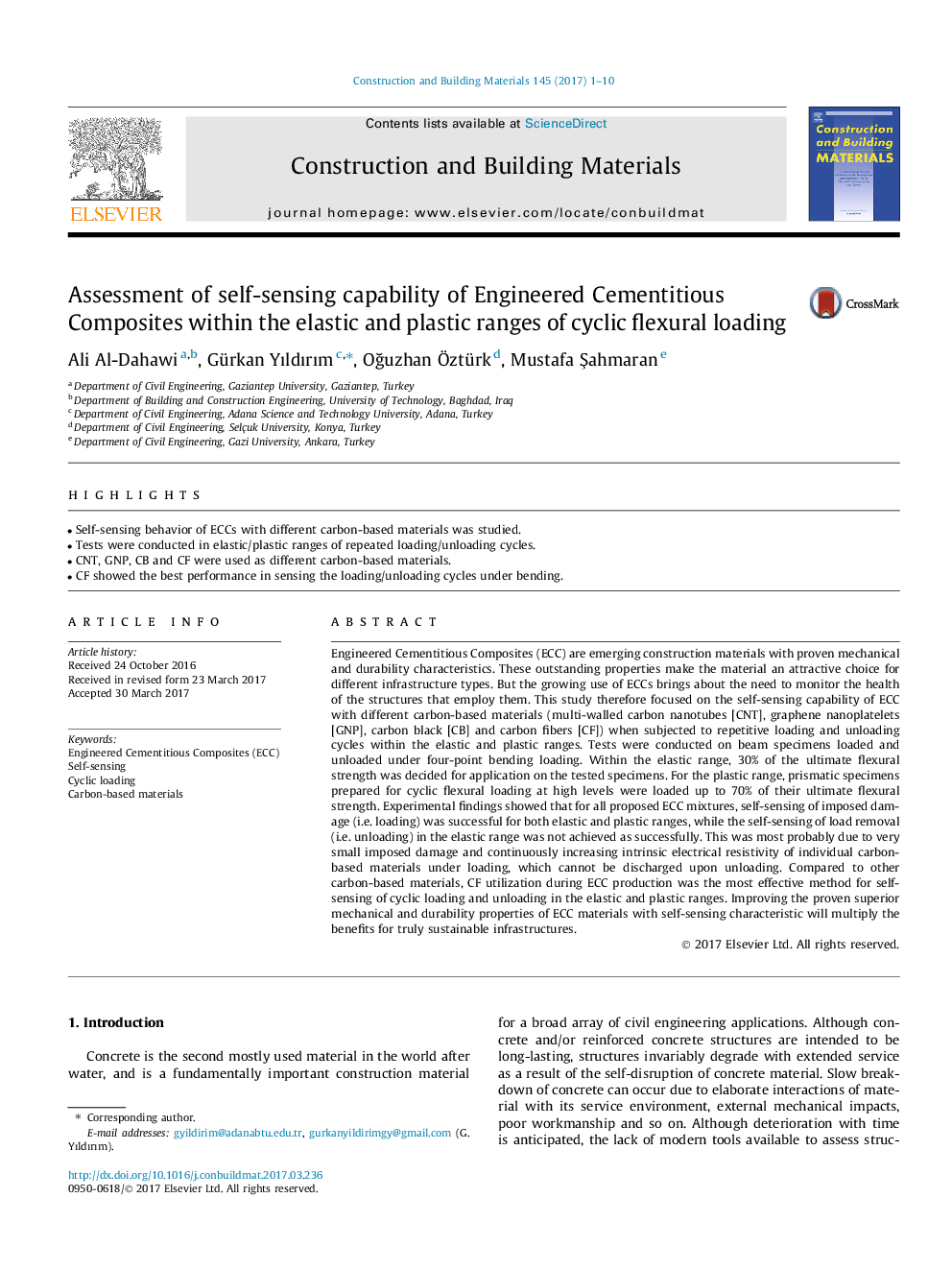| Article ID | Journal | Published Year | Pages | File Type |
|---|---|---|---|---|
| 4918359 | Construction and Building Materials | 2017 | 10 Pages |
Abstract
Engineered Cementitious Composites (ECC) are emerging construction materials with proven mechanical and durability characteristics. These outstanding properties make the material an attractive choice for different infrastructure types. But the growing use of ECCs brings about the need to monitor the health of the structures that employ them. This study therefore focused on the self-sensing capability of ECC with different carbon-based materials (multi-walled carbon nanotubes [CNT], graphene nanoplatelets [GNP], carbon black [CB] and carbon fibers [CF]) when subjected to repetitive loading and unloading cycles within the elastic and plastic ranges. Tests were conducted on beam specimens loaded and unloaded under four-point bending loading. Within the elastic range, 30% of the ultimate flexural strength was decided for application on the tested specimens. For the plastic range, prismatic specimens prepared for cyclic flexural loading at high levels were loaded up to 70% of their ultimate flexural strength. Experimental findings showed that for all proposed ECC mixtures, self-sensing of imposed damage (i.e. loading) was successful for both elastic and plastic ranges, while the self-sensing of load removal (i.e. unloading) in the elastic range was not achieved as successfully. This was most probably due to very small imposed damage and continuously increasing intrinsic electrical resistivity of individual carbon-based materials under loading, which cannot be discharged upon unloading. Compared to other carbon-based materials, CF utilization during ECC production was the most effective method for self-sensing of cyclic loading and unloading in the elastic and plastic ranges. Improving the proven superior mechanical and durability properties of ECC materials with self-sensing characteristic will multiply the benefits for truly sustainable infrastructures.
Related Topics
Physical Sciences and Engineering
Engineering
Civil and Structural Engineering
Authors
Ali Al-Dahawi, Gürkan Yıldırım, OÄuzhan Ãztürk, Mustafa Åahmaran,
